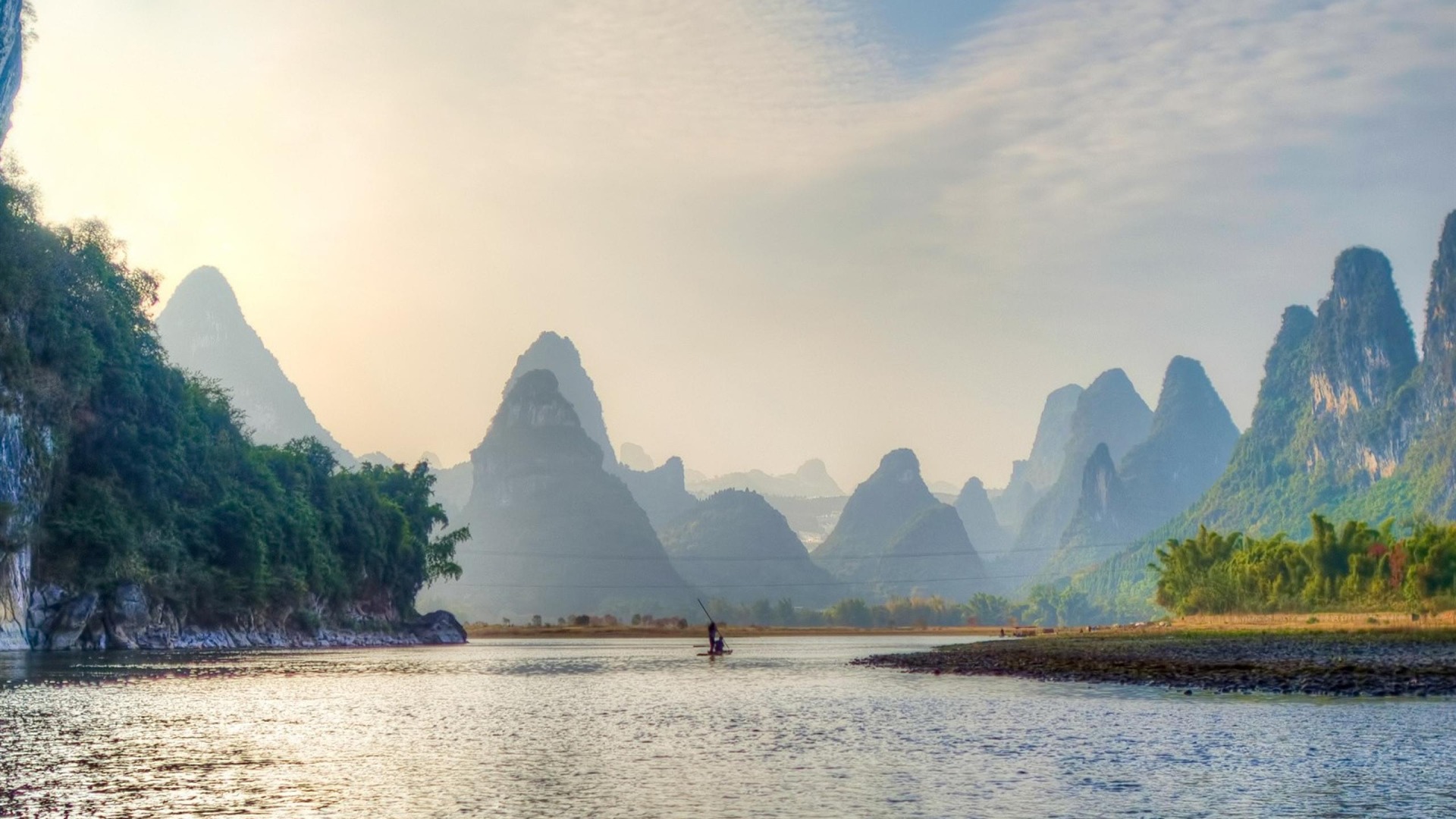

Scholars such as Chen Duxiu (陳獨秀), Cai Yuanpei (蔡元培) and Kang Youwei (康有為), who originally had classical education, began to lead a revolt against Confucianism through the New Culture Movement (新⽂文化運動) from the mid-1910s to 1920s, which aimed to eliminate all the bad habits inherited from “old China” and hence establish new ones.
#China landscape photo series#
However, due to a series of defeat and the total breakdown on First and Second Opium War, people soon lost their faith on this reconstruction that merely focused on modus and materiality, and decided to extend the improvement in larger scale. The movement mainly emphasized modern technology and institutionalization, policies such as buying battleship and guns from European countries, importing clock and traffic systems, as well as modifying the art school pedagogy by introducing sketch, color sciences, and techniques of chiaroscuro from the Renaissance period. LANDSCAPE PAINTING occupied the forefront of Chinese art from the 10th century to the 18th century, until the late Qing Dynasty, when Western imperialistic forces came to China and forced out commercial trade through military power it was not till then that the Qing Emperor decided to strengthen China through the Self-Strengthening Movement (自強運動), from 1865 to 1895. The Political Starting Point of Modern Chinese Landscape Painting Only through reading and understanding the changes of modern China landscape painting, can we then identify and understand the changing nationalistic sentiments of China after the end of the Qing era. This represents not just the great “Chinese” imperialistic culture, but also a medium to remember the “Chinese” humiliation in a form of a political, cultural, and geographical context which is a politically-correct motif for modern Chinese scholars and artists.

As these literati stand on the mountain top “looking” upon the great Chinese cultural and geographical territory in mist, the landscape painting now becomes the “map” of their imagined national glory. Traditionally, landscape painting not only represents the imperialistic Sinocentric culture that deeply rooted in literati’s mind. Why discuss the politics of Chinese landscape painting? China has been developing, experimenting, and creating shanshui paintings based on different themes and through different mediums. Photo credit: Randian He Haixia (何海霞), Glen Torrents (幽谷奔流) Wang Nanming (王南溟), “Rubbing Drought” (拓印乾旱) The third stage discussed how Ma Yansong (馬岩松) and Chen Bochong (陳伯沖) use architecture to provide a solution to society’s problems through the shanshui context of human feelings and literary culture. The second stage is featured artists such as, Wang Nanming (王南溟)、 Wang Jiuliang (王久良), and Ni Weihua (倪衛華), attempt to reveal China’s social issues through shanshui painting. The forum divided Chinese modern painting into three stages: The first stage featured artists such as Xie Shichen (謝世臣) and He Haixia (何海霞) attempting to depict ancient China’s shanshui scene. Shanshui Politics?ĪN EXHIBITION themed “Shanshui politics”, was recently held at China’s Shanghai Himalayas Museum together with the La Biennale di Venezia, concerning itself with traditional Chinese landscape painting or shanshui (山水).

I felt that this art is special because Jessica, a citizen of Hong Kong, adopted ink wash aesthetics, but deviates from the strong notion of nationalism which often infused with original landscape (shanshui) paintings and literati paintings in order to illustrate her individual, sensual and fragile experience in Japan. She tries to convey her near-death experience during the Fukushima nuclear incident using such aesthetics. She painted on a transparent celluloid, and then used a profile projector to project the celluloid onto the wall a dream-like imagery of the ink wash painting emerges, immersing the individual into this monochrome illusion when standing in front of the wall. BACK IN MAY 2015, I attended the MFA show held at the School of Art Institute of Chicago (SAIC), and saw Jessica Fu’s showcase.


 0 kommentar(er)
0 kommentar(er)
